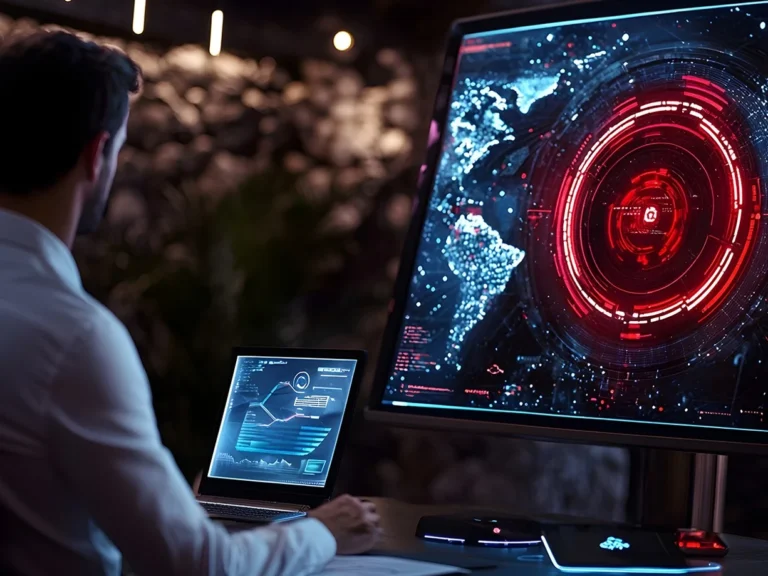What is Network Visibility?
Network visibility is the ability to see, understand, and control everything happening across network infrastructure. It’s the foundation for making smart decisions about security, performance, and growth. Think of it as having a real-time map of all data flowing through systems – from user traffic and application performance to potential security threats lurking in encrypted channels.
Here’s the thing: without proper visibility, organizations are essentially flying blind. Teams can’t protect what they can’t see, and they definitely can’t optimize what they don’t understand.
Network visibility combines monitoring tools, analytics, and data collection to provide complete awareness of network ecosystems. This means tracking every device, application, user, and data packet moving through infrastructure. Modern network visibility solutions go beyond basic monitoring to provide deep insights into network behavior, performance bottlenecks, and security risks.
The best part? Today’s advanced network visibility solutions use machine learning and behavioral analytics to spot patterns that would never be caught manually. They establish baselines for normal network activity and flag anything that looks suspicious or unusual.
Synonyms & Related Terms
- Network Manageability
- Network Traffic Analysis
- Network Insight
- Network Transparency
Why Network Visibility and Monitoring Matter
- Security First:
Cyber threats are getting smarter and more persistent. Network visibility tools help detect unauthorized access, malware in encrypted traffic, and unusual data movements before they become full-blown breaches. When attacks do happen, visible network coverage means faster containment and reduced damage.
- Performance Optimization:
Slow applications kill productivity. With proper visibility network monitoring, teams can identify performance bottlenecks, optimize traffic routing, and ensure critical applications get the bandwidth they need. No more wondering why the video conference keeps freezing.
- Operational Control:
Network perception gives organizations the power to make data-driven decisions. Teams can see which applications consume the most resources, identify underutilized network segments, and plan capacity upgrades before users start complaining.
- Business Continuity:
A visible network outage gets detected and resolved faster than one discovered through angry user calls. Proactive monitoring helps prevent small issues from becoming major disruptions.
How Network Visibility Works
Effective network visibility relies on several key components working together:
- Traffic Analysis: Deep packet inspection reveals what’s actually moving through networks, not just how much data is flowing.
- Device Discovery: Automated tools map every connected device, from servers and switches to IoT sensors and mobile devices.
- Application Monitoring: Track performance and usage patterns for business-critical applications across the entire network path.
- Behavioral Analytics: Machine learning algorithms establish normal network patterns and highlight anomalies that could indicate problems or threats.
- Real-time Dashboards: Centralized visibility platforms present all this information in actionable formats that network teams can actually use.
Building Strong Network Visibility
To maximize network visibility and monitoring capabilities:
- Deploy comprehensive monitoring tools that cover both physical and virtual network segments. Blind spots are security risks waiting to happen.
- Implement advanced network visibility solutions that integrate with existing security stacks. Siloed tools create gaps in coverage.
- Focus on scalable data collection methods that can grow with networks without overwhelming monitoring infrastructure.
- Train teams to interpret visibility data effectively. The best tools in the world won’t help if nobody knows how to use them properly.
- Regularly audit visible network coverage to identify and eliminate monitoring gaps.
Related Terms & Synonyms
- Network Monitoring: The continuous observation of network components and traffic to ensure optimal performance and security.
- Network Observability: A broader approach that includes visibility but emphasizes understanding system behavior and relationships through data correlation.
- Network Security Monitoring: Focused specifically on detecting and responding to cybersecurity threats within network traffic.
- Infrastructure Visibility: The ability to see and understand all components of IT infrastructure, including network, servers, and applications.
- Traffic Analysis: The process of examining network data flows to understand usage patterns, performance issues, and security threats.
- Network Intelligence: Advanced analytics applied to network data to generate actionable insights and predictive capabilities.
People Also Ask
1. Why is network visibility important?
Network visibility is critical because it provides the foundation for effective security, performance management, and business continuity. Without clear visibility into network traffic and behavior, organizations cannot detect threats, optimize performance, or prevent outages before they impact operations.
2. What tools give complete visibility into multi-channel performance?
Comprehensive network visibility platforms that combine traffic analysis, application performance monitoring, and infrastructure monitoring provide multi-channel visibility. These solutions typically include packet capture capabilities, flow analysis, synthetic transaction monitoring, and real-time performance dashboards.




